2023 has seen the largest number of young Curlew fledged into the wild since a dedicated conservation programme began seven years ago.
While it was estimated in 2016 that the Curlew had just ten years left until extinction in Ireland, the efforts of Ireland’s Curlew Conservation Programme appear to have, for now, helped stave off this extinction.
Curlew Conservation Programme areas included Donegal and eight other geographical areas.
The Annual Report from the Curlew Conservation Programme (CCP), a partnership between the National Parks and Wildlife Service (NPWS) and the Department of Agriculture, Food and the Marine, documents forty-two chicks reaching fledging stage in 2023, up from nineteen in 2022.
This represents an increase of 221% in the number of chicks fledged.
A total of thirty-eight breeding pairs were confirmed, with another ten pairs considered ‘possible’ breeders. Nationally, there are just 100 breeding pairs remaining in Ireland.
As ground-nesting birds, Curlew nests and eggs are vulnerable to predators, infield operations and disturbance. This is compounded by degradation and loss of habitat in landscapes.
Responding to the report findings, Minister for Nature, Heritage and Electoral Reform Malcolm Noonan TD said: “Our history, culture and communities have such a deep connection with this precious species and its unique call, heard for centuries on our meadows and wetlands. The work pioneered by the Curlew Conservation Programme over the past seven years shows that there are practical conservation efforts that we can take to stave off extinction of the Curlew. It also shows that we need to ramp these efforts up significantly, while also addressing wider land use changes. We will be announcing detailed plans to do just this in the very near future, building on the solid foundations that the Curlew Conservation Programme has provided.
“I would like to thank the programme teams for all of their work on the programme over the past seven years, which equips us with so many useful insights,” the Minister added. “A key success of the programme has been the engagement with farmers, landowners and local communities, who are central to all of our conservation efforts.”
The Curlew Conservation Programme was established in response to a national survey, which identified the scale of the loss and action required to save the Curlew from extinction. In Ireland, the Curlew population has declined by 98% since the late 1980s/early 1990s. Over the past seven years, NPWS has worked together with the Department of Agriculture, Food and the Marine to support local teams on the ground on a wide range of conservation activities. Significant efforts undertaken by the programme have included everything from surveys to nest protection, landowner and community engagement, awareness raising, research and the restoration and maintenance of habitats.
This year saw the highest number of chicks being fledged since the programme began. This has been attributed to the more widespread use of headstarting – a practice which the CCP has implemented since 2021 and involves collecting Curlew eggs from wild birds’ nests and incubating them in a controlled environment until they hatch. The chicks are reared in pens until they are ready for release back into the wild. The practice of headstarting is still in its infancy, but shows encouraging signs in supporting a greater number of chicks to reach fledgling stage. While it may provide a valuable boost to the number of birds being fledged, it does not address the underlying issue of habitat loss and degradation and long-term viability of the population.
Programme teams have used a range of approaches to support the Curlew population. Community engagement has been an essential element of the programme with local members of the community involved in Curlew Action Teams. Teams work closely with the farming community, landowners and other stakeholders on awareness raising activities and practical supports for farmers. Nest protection fencing was effective in providing protection for eggs from ground predators resulting in a high hatching rate, and may also provide protection for other vulnerable birds.








